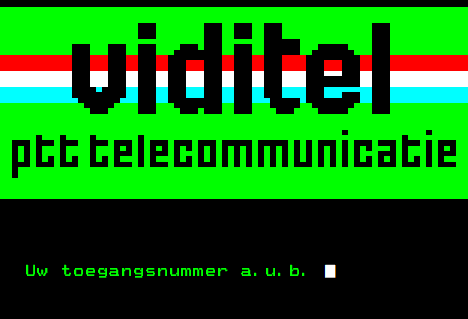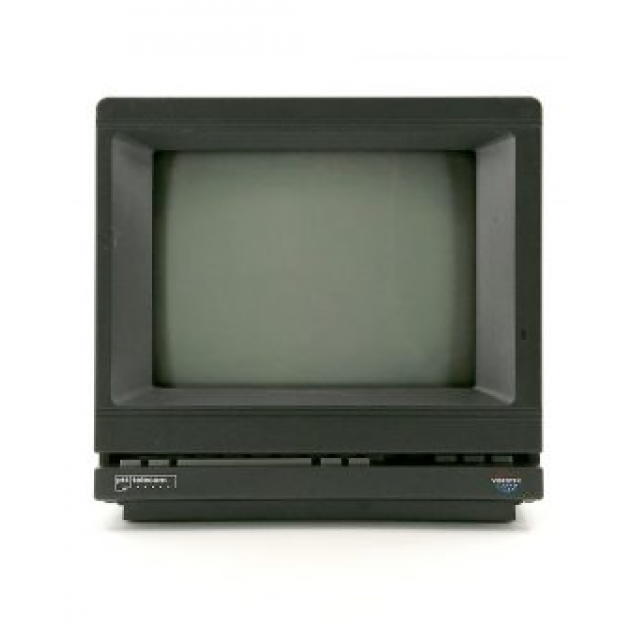
For some readers of PC Active, the name ‘Viditel’ certainly rings a bell. It was the (local) forerunner of the Internet, and for many people in their fifties today the very first introduction to what was then called teleshopping and telesoftware. Viditel itself no longer exists, but you can still enjoy the experience – preferably with a retro computer, of course.
Wim Dewijngaert
|
The first page that users of Viditel saw, |
Let’s take a step back in time. On August 7, 1980, the then PTT started their first public information service under the name Viditel.
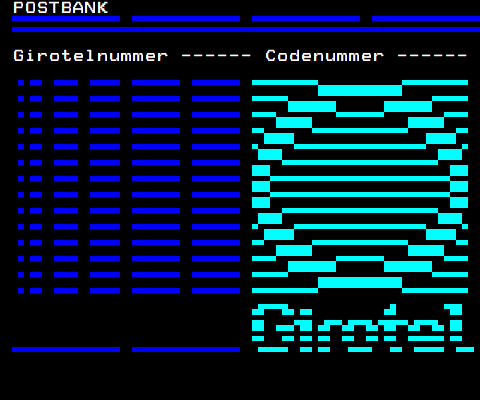 |
|
Banking with Girotel |
With the help of a screen and a keyboard you could consult pages from your home that were somewhere on a server of the PTT. Typically, the choices you had to make in menus were by typing in a number between 0 and 9. With an asterisk and a number followed by a hash, you could jump directly to a certain page. You did not send mails to e-mail addresses, but to subscriber numbers.
Protocol
As with the colleagues of the Belgian RTT, the videotex protocol was used to transport images to the viewers via the telephone network. Videotex is compatible with the presentation display of teletext – invented a few years earlier by the British broadcaster BBC – and so the same chips could be built into terminals relatively cheaply.
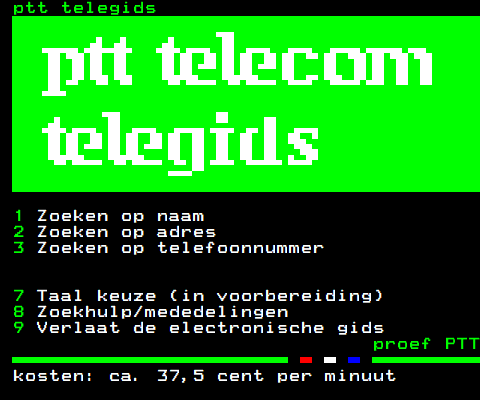 |
|
Via the telegids you could look up someone’s telephone number |
With seven colors, 40 characters per line, 24 lines per page, a fixed character set and the slow V.23 modem protocol, the possibilities were very limited, but sufficient for the time.
In the meantime, a similar scenario was playing out in France. A different standard was chosen for their Minitel, which was closer to the teletext protocol Antiope used there, so that there were also more graphic options. The free distribution of terminals led to a huge success that would last into 2012. In the Netherlands and Belgium, users had to purchase a terminal or a computer modem themselves in order to use the (at that time expensive) services.
 |
|
Our HCC had too |
Entrance gate
Viditel formed a gateway to information databases from a large number of suppliers. For example, you could consult vacancies and the telephone directory, which was unique for that time. Viditel had plenty of business users, but consumers stayed away. To gain access to a larger sales market, experiments were set up with interactive teletext, whereby videotex pages could be called up via the television and the numeric keypad on the telephone. A small ‘boost’ came in 1986 when Postbank started electronic banking, but Viditel was never able to reach a large audience.
In a last attempt to make Videotex more popular, Videotex Nederland was founded alongside Viditel in September 1989: a service without subscription costs, but with prices that depended on the telephone number called. From 1994, videotex was gradually eclipsed by the Internet, and on January 1, 1997, the PTT finally pulled the plug on the outdated medium.
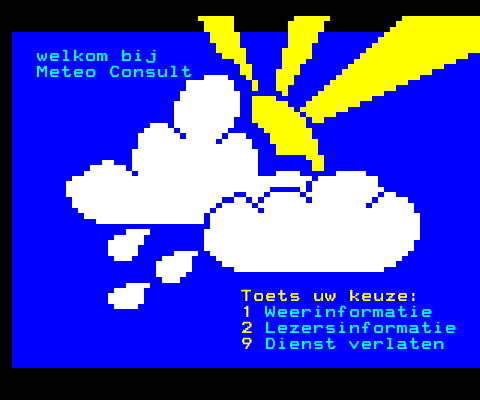 |
| Meteo Consult provided your own weather report |
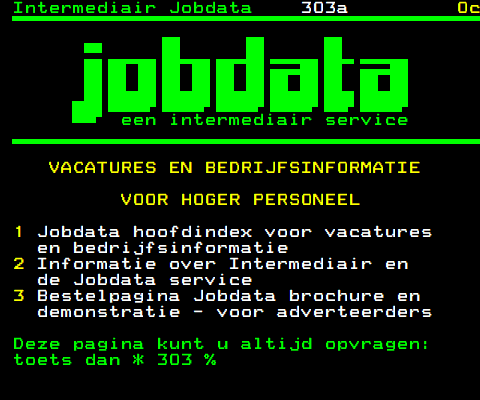 |
| Vacancies on Viditel |
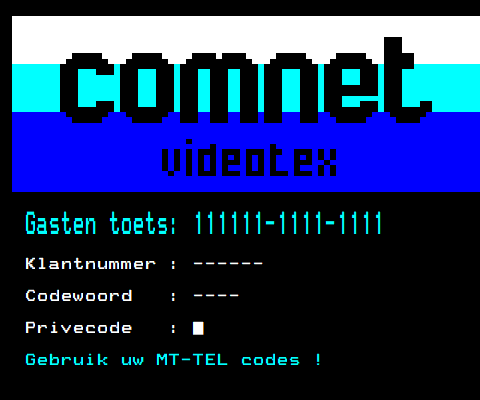 |
| At ComNet you could as a guest consult the service even without codes |
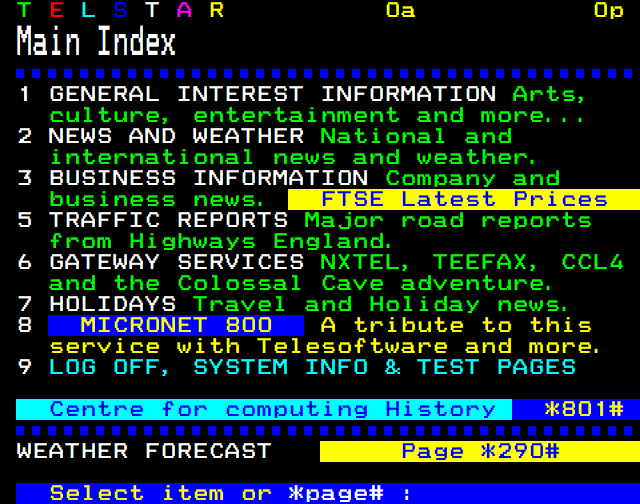 |
|
Telstar is a still existing videotex service that you can even use with |
Hobby
In addition to the official Viditel, various hobbyists also started working with videotex in the 1980s. It sufficed to rent one or more telephone lines and install a server with a number of modems to set up your own service. Following the then popular text-based BBSs (Bulletin Board System) – which were even more limited in their capabilities – the non-commercial videotex databases grew like mushrooms. A lot of sysops – because that was what the administrators of the servers were then called – offered their database via a cheap local telephone rate. By means of ‘telesoftware’ you could often download programs there, just as we do now via the internet.
Viditel’s biggest commercial competitor was ComNet, founded in 1986, which was active in both Belgium and the Netherlands and succeeded in attracting a large number of information providers, including a number of teleshopping services, but also our own HCC, for example.
Videotex even now?
Contrary to what you might think, it is still possible today to consult a number of videotex databases, and thus briefly bring the past back to life. A number of people still keep a videotex server up and running for nostalgic reasons. Absolutely old school. The only requirement to dial in again is an old computer with a modem. That can be a PC, a P2000 or an MSX; actually it doesn’t matter, as long as there is one videotex client running and a V.23 modem can be connected to it. If you call one of the numbers at the bottom of this article, you will see the pages building up letter by letter, just as they did forty years ago. You may need a pulse-to-DTMF converter if your modem is really old.
Even those who no longer have old material in their attic can still wallow in a touch of nostalgia. You can use the Telstar Viewdata Client download from John Newcombe (https://glasstty.com/telstar-viewdata-client). It is available for Mac, Linux and Windows. Use the addresses from the list to establish a connection. The beeping sounds of the modem – and the sky-high telephone bill that often followed afterwards – you have to think about yourself.
|
